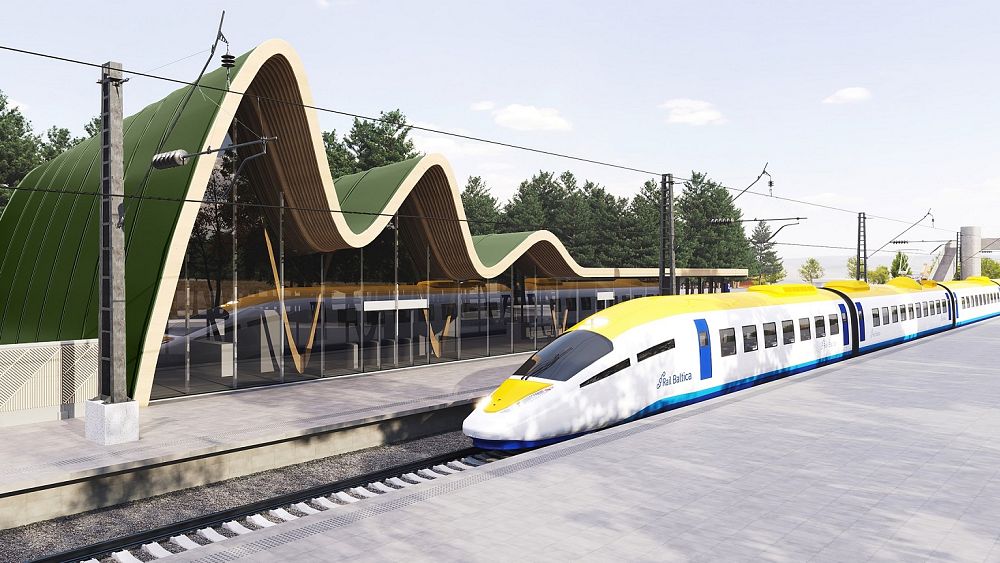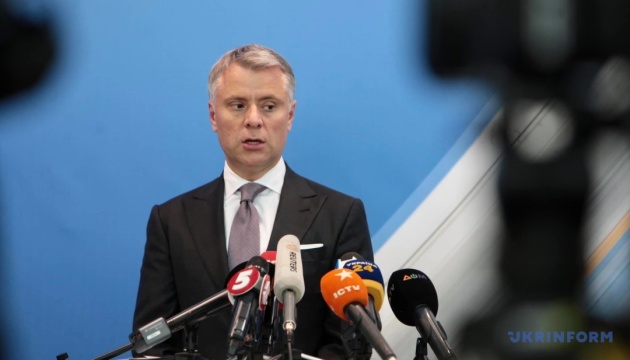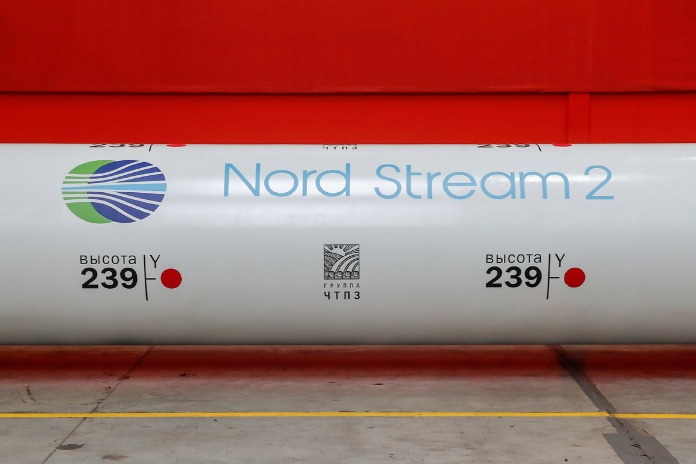The largest infrastructure project in the Baltics for a hundred years is underway.
The 870km Rail Baltica project will connect the capitals of Lithuania, Latvia and Estonia with Warsaw and the rest of Europe, allowing trains from the continent to run uninterrupted.
However, the project is both symbolic and physical.
For the EU, it is a statement on the return of the Baltic states to Europe and on breaking away from their Soviet past.
An ambitious project
Since the late 1990s there has been increasing talk of an inter-Baltic railway project, with a cooperation agreement signed in 2001 by the Estonian, Latvian and Lithuanian transport ministers.
However, it was only in 2010 that a memorandum was signed by representatives of the transport ministries of Poland, Lithuania, Latvia, Estonia and Finland.
While it currently takes seven hours to travel from the Lithuanian capital to the Estonian, the new line will almost halve that to just three hours and 38 minutes.
The railway will start in Tallinn before passing through Pärnu, Rīga, Panevėžys and Kaunas before reaching the Lithuanian-Polish border; There will also be a connection from Kaunas to Vilnius.
When complete, trains will be able to run from Poland to the Baltic States, with passenger trains running at top speeds of 234 km/h.
Economical advantages
While the project does not come cheap, with an estimated cost of €5.8 billion, the project’s cost-benefit analysis predicts quantifiable benefits of up to €16.2 billion.
The cost of the project for the Baltic countries will be reduced with EU funding of up to 85 percent of the project through the Connecting Europe Facility (CEF) instrument.
So far, the EU CEF fund has contributed 824 million euros to the new line.
The project is so colossal that its construction alone is expected to create 13,000 full-time direct jobs and a further 24,000 indirect jobs.
When completed, the route will form the latest addition to the EU’s North Sea-Baltic Corridor, a trans-European route that includes key cities such as Rotterdam, Berlin and Warsaw.
For passengers there will be regular connections with at least one international train every two hours, resulting in eight pairs of trains per day in each direction.
The project will not only speed up passenger transport, but also reduce freight costs and provide a time-efficient way to transport bulk goods.
political statement
Perhaps more important to the EU than the project’s economic promise is its political message.
While the Baltics were formerly connected by European railway standards using 1435 mm gauge, since the Soviet occupation the region’s railway system has adopted the Russian 1524 mm gauge.
This difference severely limited the Baltics’ ability to connect to Europe by rail, as passengers or freight had to be reloaded onto a new train at the Polish border before continuing.
Because of its Russian gauge, the Baltics have typically relied on a west-east axis, with much of the rail traffic coming from Russia.
However, since gaining independence in the 1990s, the Baltic States have been moving towards Brussels and away from Moscow.
The countries joined NATO in March 2004, and EU accession followed quickly in May; Both moves infuriated Russian President Vladimir Putin.
In the face of mounting Russian aggression, all three countries were already trying to improve interoperability with the rest of the EU, but Putin’s invasion of Ukraine has heightened the urgency.
In August, the project received military mobility funds from Latvian funds, demonstrating the civilian and military features of the program.
“Under the current geopolitical conditions, the strategic importance of the Rail Baltica project is increasing,” said the Latvian Minister of Transport at the time.
“It is particularly important to ensure reliable connectivity with Western Europe and to fully utilize the new rail transport connection with Europe in order to increase our country’s defense capability.”
The decoupling of the Baltic state’s rail network from Russia is not the only area in which the countries are trying to reduce their dependence on Russia.
Another legacy of the Soviet occupation is that the Baltics’ power grids are synchronized with Russia’s centrally controlled grid, raising fears that Russia could cut power supplies to the countries.
The Baltic States have agreed to fully decouple from the Russian electricity grid and synchronize with the European grids by 2025.
However, in July Reuters reported that the European electricity grid ENTSO-E would connect the Baltic states’ grids within 24 hours if the countries were disconnected from Russia.
criticism of the project
Like all major projects, Rail Baltica was not without criticism.
Speaking to Emerging Europe last year, Priit Humal, board member of the citizens’ movement Avalikult Rail Balticust (Public via Rail Baltica), explained that Rail Baltica is as controversial in the Baltics as HS2 is in the UK.
He continued that the main difference was due to differences in GDP, stating that Rail Baltica was three times more expensive for Estonia than HS2 for the UK.
There were also concerns about the safety of EU funds.
Any cut in EU funding would have to be offset by national governments, which could lead to greater public opposition to the scheme.
However, with several parts of the project currently under construction, it seems unlikely that the program will reach buffers before its expected completion in 2026.




